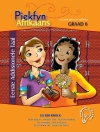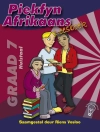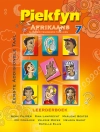Understanding child development through the prism of the Five Elements adds an exciting new dimension to western thinking on the nurture of children. It can not only explain patterns of behaviour in a new and helpful way, but suggest approaches and methods to help children, and groups of children, become more balanced and therefore happier, more resilient, and more open to learning and new experience.
The authors explain in detail the characteristics of each of the Five Elements of Chinese thought (Wood, Fire, Earth, Metal and Water) with their distinctive modes of expression and potential associated difficulties, and describe the problems that can occur if a child’s elements are not in balance. In doing so, they provide a completely new and accessible way of understanding the emotional and behavioural state, and developmental stage of a child, in and out of the classroom. They introduce a wide range of easy-to-do and entertaining exercises and group activities to balance the elements, both individually and in groups.
This exciting and practical book will help anyone working with or caring for children to deepen their understanding of childhood behaviour in general, and of individual children in particular, and to take active steps to nurture their potential, including teachers, therapists, occupational therapists, Chinese medicine and other alternative medicine practitioners, and Qigong and martial arts teachers, as well as parents.
Tabella dei contenuti
Introduction. 1. How do our Children Develop?: Overlapping the Western and Eastern View. 2. The Foundation of the Traditional 5-Elements and Their Relationship to Child Development. 3. The 5-Elements in Child Development: Wood, Fire, Earth, Metal, Water. 3.1. The Wood Element in Child Development. 3.2. The Fire Element in Child Development. 3.3. The Earth Element in Child Development. 3.4. The Metal Element in Child Development. 3.5. The Water Element in Child Development. 4. 5-Element Examples of Children in Everyday Life. 5. How We Work with Children and the 5-Elements. 6. The Role of Adults in 5-Element Work with Children. 7. Guidelines and Examples for Creating 5-Element Environments for Children in the Home, Schools, and Therapy Settings. 8. Ideas and Exercise Examples from Practice. Chapter 9. Example of a Five-Week Project and Community Event for Every Age. References. Index.
Circa l’autore
Karin Kalbanter-Wernicke initially trained as a physiotherapist and went on to study shiatsu in Japan for several years. In 1985, together with her husband Dr. Thomas Wernicke, she founded an institute for Complementary and Alternative Medicine just outside Frankfurt, Germany. Karin teaches baby and child shiatsu internationally and is a Founder of the German Shiatsu Society. She has written several books in her native German including ‘The Five Elements in Children’.












